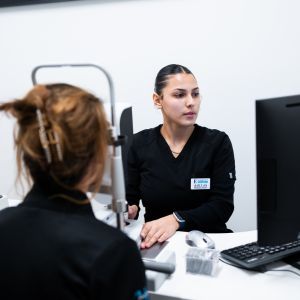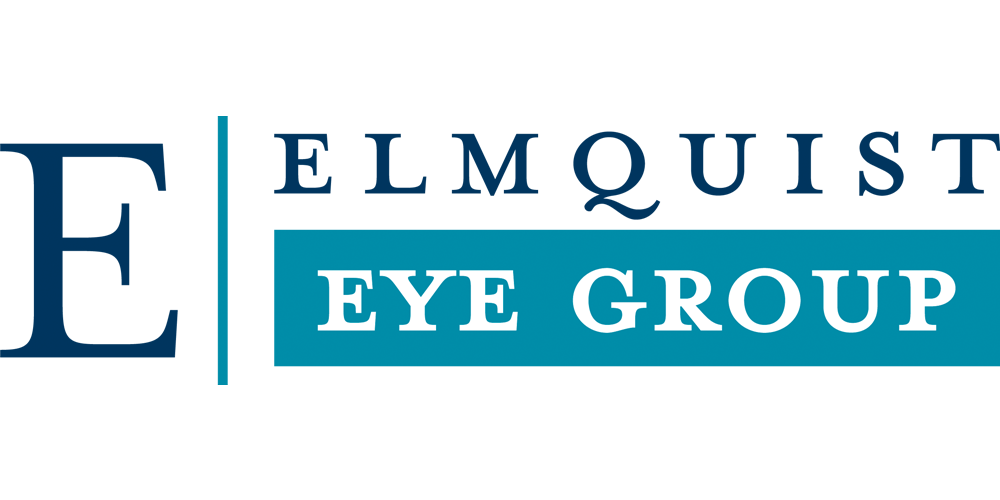Glaucoma
Glaucoma is often called the “silent thief of sight” because it can slowly damage vision without noticeable symptoms in its early stages. At Elmquist Eye Group, we take a proactive approach with advanced testing, personalized treatment, and ongoing monitoring to help protect your sight and preserve your independence for years to come.
Protecting Your Vision from Glaucoma
What is Glaucoma?
Glaucoma is a group of eye diseases that damage the optic nerve, the part of your eye responsible for sending images to your brain. This damage is most often linked to elevated pressure inside the eye (intraocular pressure), though glaucoma can develop even when eye pressure is normal. If left untreated, it can cause irreversible vision loss.
While glaucoma cannot be cured, early detection and proper treatment are key to protecting your vision and maintaining your quality of life.
Types of Glaucoma
Open-Angle Glaucoma (most common)
Develops slowly when fluid drains too slowly from the eye, causing pressure to build and damage the optic nerve. Symptoms often go unnoticed until vision loss has already begun.
Angle-Closure Glaucoma (less common, but urgent)
Occurs when the drainage angle in the eye becomes blocked, causing a sudden rise in pressure. This is a medical emergency and requires immediate treatment.
Normal-Tension Glaucoma
Even with “normal” eye pressure, optic nerve damage may still occur. The exact cause is not fully understood, but risk factors include poor blood flow to the optic nerve.
Secondary Glaucoma
Caused by another eye condition or injury, such as trauma, advanced cataracts, or inflammation.
“Knowing my eyes are being closely monitored gives me real peace of mind.”
Warning Signs of Glaucoma
- Gradual loss of peripheral (side) vision
- Blind spots in central or side vision
- Patches of blurred vision
For acute angle-closure glaucoma, seek emergency care if you notice:
- Sudden, severe eye pain
- Nausea or vomiting with eye discomfort
- Sudden, rapid decrease in vision
Glaucoma Treatment Options
At Elmquist Eye Group, Dr. Rodriguez and our team tailor glaucoma treatment to each patient:
- Prescription Eye Drops
The most common first-line treatment. Drops work by lowering intraocular pressure, either by reducing fluid production or improving fluid drainage. - Laser Therapy
Outpatient procedures that help fluid drain from the eye more effectively. Options may include selective laser trabeculoplasty (SLT) for open-angle glaucoma. - Minimally Invasive Glaucoma Surgery (MIGS)
A newer approach that uses microscopic devices to improve drainage with fewer risks and faster recovery than traditional surgery. - Traditional Surgery
In advanced cases, procedures such as trabeculectomy or shunt implantation may be recommended to create new pathways for fluid to leave the eye.
Glaucoma is a chronic condition, so ongoing care and monitoring are essential to protect your vision.
Why Early Detection Matters
Preserving Vision
See What Patients Say
Glaucoma runs in my family, so I was relieved when Dr. Rodriguez started treatment before I lost vision. I feel confident knowing my sight is being protected for the future.
I was nervous when I first learned I had glaucoma, but the team at Elmquist explained everything clearly. With regular check-ups and treatment, I know I’m doing what I can to protect my vision.



Frequently Asked Questions
Is glaucoma hereditary?
Yes. Having a parent or sibling with glaucoma increases your risk. That’s why regular exams are especially important if glaucoma runs in your family.
Can I go blind from glaucoma?
If untreated, glaucoma can cause irreversible blindness. With early diagnosis and treatment, most patients maintain useful vision throughout their lives.
How often should I be screened?
Does lowering eye pressure cure glaucoma?
What’s the difference between glaucoma and cataracts?
schedule your exam
Don’t Wait for Symptoms to Appear
Glaucoma can cause irreversible vision loss before you even realize it’s there. Protect your sight with a comprehensive eye exam at Elmquist Eye Group.
